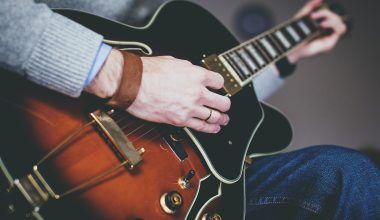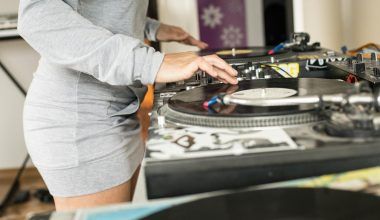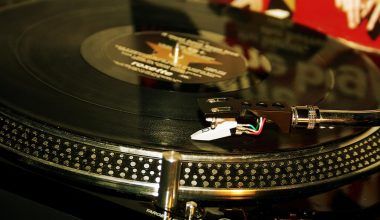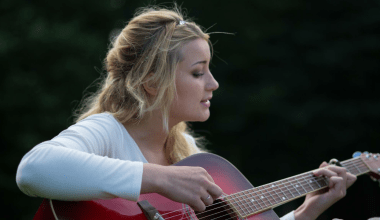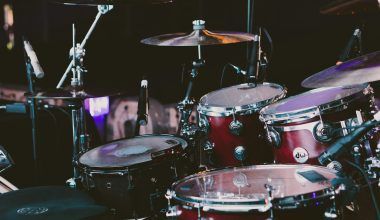Creating the ideal studio setup is crucial for anyone pursuing music production, content creation, or video editing. A well-designed studio can boost your creativity, improve efficiency, and enhance the quality of your work.
Whether you’re setting up a home studio for the first time or upgrading an existing space, understanding what you need is essential. In this guide, we’ll explore everything about building the perfect studio setup, from choosing equipment to optimizing your space.
Why Is a Good Studio Setup Important?
A well-organized studio setup offers several benefits:
- Improved Workflow: Keeps everything accessible and organized, saving time.
- Enhanced Creativity: A comfortable space encourages productivity and inspiration.
- Professional Results: Quality equipment ensures high-quality audio, video, or content.
- Cost-Effective: Investing in the right setup upfront prevents frequent upgrades.
By focusing on the essentials, you can build a studio setup tailored to your needs.
Define Your Studio’s Purpose
Before you start buying equipment, decide what you’ll use your studio for. Common studio setups include:
1. Music Production Studio
- For recording, mixing, and mastering songs.
- Requires high-quality audio gear and soundproofing.
2. Video Production Studio
- For filming and editing videos.
- Needs lighting, cameras, and editing software.
3. Content Creation Studio
- For streaming, podcasts, or social media videos.
- Requires versatile equipment and a visually appealing background.
4. Hybrid Studio
- Combines audio, video, and content creation tools.
Identifying your needs ensures you invest in the right equipment for your studio setup.
Choose the Right Space for Your Studio
The location of your studio is just as important as the equipment. Consider the following:
1. Room Size
- Larger rooms offer better acoustics and more space for equipment.
- Avoid small, boxy rooms prone to echo.
2. Noise Levels
- Pick a quiet area to minimize background noise.
- Avoid rooms near busy streets or loud appliances.
3. Lighting
- Natural light is ideal but can be supplemented with studio lighting.
- Ensure the lighting doesn’t cause glare on screens or cameras.
4. Accessibility
- Choose a space that’s easy to access and organize.
Setting up in the right location ensures your studio is functional and comfortable.
Essential Equipment for a Studio Setup
The equipment you need depends on your studio’s purpose. Here’s a breakdown:
For Music Production
- Audio Interface: Connects microphones and instruments to your computer.
- Popular Options: Focusrite Scarlett, PreSonus AudioBox.
- Microphone: Choose a condenser mic for studio recording.
- Example: Audio-Technica AT2020, Rode NT1-A.
- Studio Monitors: Provide accurate sound reproduction.
- Example: KRK Rokit, Yamaha HS8.
- Digital Audio Workstation (DAW): Software for recording and editing music.
- Example: Logic Pro, Ableton Live, FL Studio.
- MIDI Controller: For composing and producing beats.
- Example: Akai MPK Mini, Novation Launchkey.
For Video Production
- Camera: Choose a DSLR or mirrorless camera for high-quality video.
- Example: Sony A7 III, Canon EOS R.
- Tripod: Keeps your shots steady.
- Example: Manfrotto Compact Action.
- Lighting: Softboxes, ring lights, or LED panels improve video quality.
- Example: Neewer Softbox Kit.
- Backdrop: A clean or branded background enhances video professionalism.
- Video Editing Software: Edit footage seamlessly.
- Example: Adobe Premiere Pro, Final Cut Pro.
For Content Creation
- Microphone: Dynamic or USB mics for clear audio.
- Example: Shure SM7B, Blue Yeti.
- Streaming Equipment: Capture cards, webcams, and dual monitors.
- Lighting: Ring lights or key lights for flattering illumination.
- Headphones: Closed-back headphones for monitoring sound.
Having the right tools ensures your studio setup meets professional standards.
Optimize Your Studio Setup
1. Soundproofing
For music or podcasts, soundproofing is essential to reduce noise.
- Use acoustic foam panels, bass traps, or carpets to minimize echo.
2. Cable Management
Organized cables reduce clutter and prevent damage. Use Velcro ties or cable sleeves to keep everything tidy.
3. Ergonomic Setup
Ensure your desk and chair are comfortable for long sessions. Adjustable chairs and monitor stands can prevent fatigue.
4. Proper Ventilation
Good airflow keeps your studio comfortable and prevents equipment from overheating.
An optimized studio setup enhances productivity and reduces distractions.
Budget-Friendly Tips for Your Studio Setup
Building a studio doesn’t have to break the bank. Here are some cost-saving tips:
- Start Small: Buy essential equipment first and upgrade later.
- Buy Used Gear: Look for second-hand equipment in good condition.
- DIY Soundproofing: Use blankets or curtains as temporary solutions.
- Use Free Software: Many DAWs and editing tools offer free versions.
- Repurpose Existing Items: Use your current desk or lighting setup creatively.
Budget-friendly setups can still deliver professional results with careful planning.
Promoting Your Work from Your Studio
Once your studio setup is complete, use it to create and share high-quality content. Here’s how to promote your work:
- Share behind-the-scenes photos of your studio.
- Post snippets of your projects.
2. Collaborate with Others
Invite other creators or musicians to your studio to expand your audience.
3. Optimize for Platforms
Tailor your content for specific platforms like YouTube, TikTok, or Spotify.
Promoting your work ensures your studio setup becomes a hub for creativity and growth.
Conclusion:
A great studio setup is more than just equipment—it’s about creating a space that inspires and supports your creativity. By carefully choosing the right tools, optimizing your environment, and staying within your budget, you can build a studio that works perfectly for you.
Whether you’re producing music, filming videos, or creating content, this guide provides all the tips and insights you need to get started. Begin building your dream studio setup today and watch your creativity flourish.
Related Articles:
For further reading, explore these related articles:
- Best Microphone for Vocals – Top Picks for Studio and Live Performances
- 5 Things You Should Do Before Going to a Recording Studio
- How to Make Reels on Instagram With Music: Step-by-Step Guide
For additional resources on music marketing and distribution, visit Deliver My Tune.

